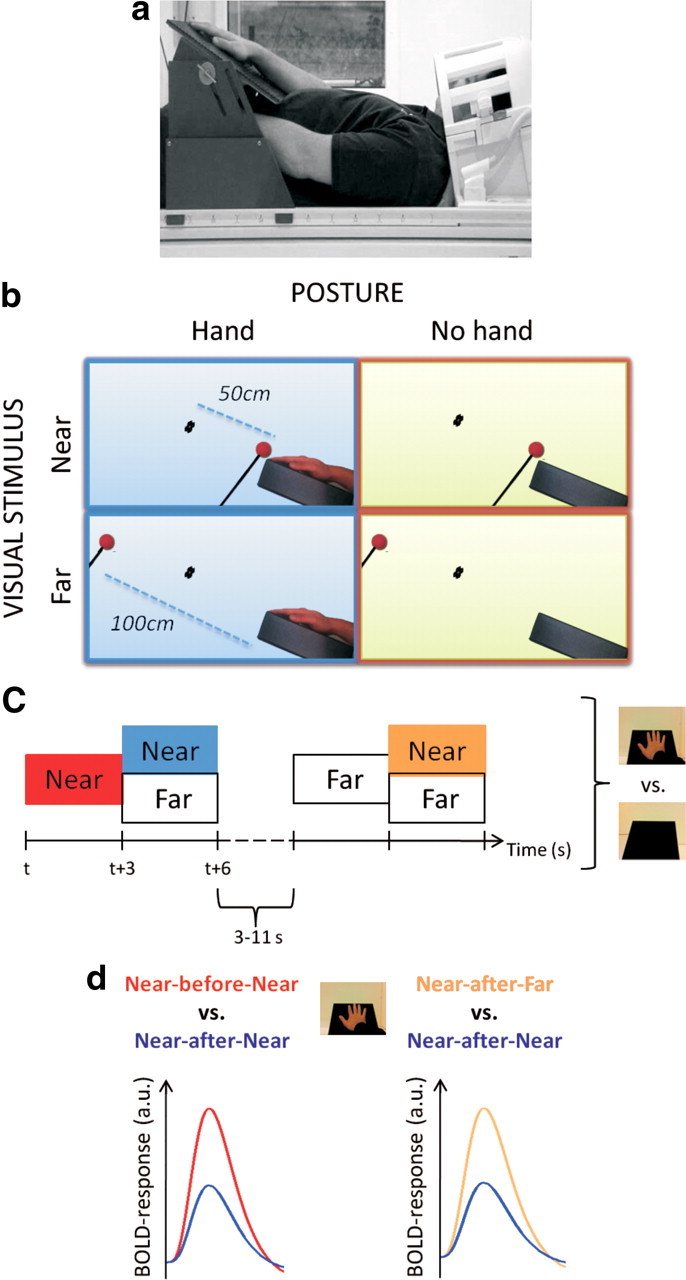Figure 1.

Experimental setup and design. a, Photograph of the experimental setup showing a participant lying in the scanner with the head tilted and the right hand placed on an angled table (see Materials and Methods). b, The participant was asked to maintain his or her gaze on a target point (represented as a black dot) placed 50 cm from the tip of the right middle finger throughout the whole experiment. The visual stimulus consisted of a small sphere moving close (“Near,” first row, 2 cm away from the participant's right hand) or far (“Far,” second row, 100 cm away from the participant's hand) to the participant's right hand on the table. A crucial manipulation in the study involved the posture of the arm. The arm could either be extended so that the hand was placed on the table in full view (left column) or retracted with the hand resting on the participant's chest (right column). c, The experimental design included different combinations of Near and Far stimuli: Near-Near, Near-Far, Far-Near, Far-Far. Each combination lasted 6 s and was divided into a first and second part of equal length (3 s periods). The 6 s trials were separated by an intertrial interval of 3–11 s in duration. The same experiment was performed in HAND and NO HAND runs. d, Expected results in terms of BOLD adaptation. The experimental design allowed us to study adaptation with two complementary approaches. In particular, a reduced BOLD signal is expected in the Near-after-Near half with respect to the Near-before-Near half of the stimulation (the blue and the red lines in the left plot, respectively). The plot on the right represents the expected adaptation results from the second approach. Similarly, the signal should be reduced in the Near-after-Near half with respect to the Near-after-Far half (represented with the blue and the yellow line in the right plot, respectively). Crucially, significant adaptation effects are expected in HAND runs as opposed to NO HAND runs.
